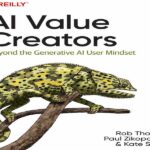- عنوان کتاب: First Transitions to Early Childhood Education and Care
- نویسنده: E. Jayne White
- حوزه: آموزش کودک
- سال انتشار: 2022
- تعداد صفحه: 306
- زبان اصلی: انگلیسی
- نوع فایل: pdf
- حجم فایل: 13.2 مگابایت
هنگامی که از دعوت میشویم برای کتابی پیشگفتار بنویسیم که یافتههای جدید از تحقیقات را گرد هم میآورد و خواننده را در پروژهای هدایت میکند که در مورد تجربیات اجتماعی و عاطفی کوچکترین فرزندان ما در طی برخی از اولین انتقالهای مکانی که انجام میدهند، اطلاعات زیادی کسب کرده است. ، به کوچکترین فرزندانی که در زندگی ام افتخار دارم فکر کردم: دو دختر کوچک که در سایر نقاط جهان زندگی می کنند. با خواندن فصل اول، من هم جلسه کنار دریاچه را با یک قهوه در جایی که برای من و هلن آن سوی دنیا بود، به یاد آوردم، زمانی که من و هلن برای اولین بار در سال 2014 جین را ملاقات کردیم. اگرچه من هم آنجا بودم، اما اینطور نبود. جلسهام، و من آنها را رها کردم تا با همکاران دیگری که در زمینه انتقال کار میکردند، صحبت کنند، بهویژه پروژه POET (آموزشهای انتقال آموزشی)، همکارانی که، همانطور که جین میگوید، تمرکز زیادی روی انتقال به مدرسه داشتند. کمتر در مورد کوچکترین کودکان: شکافی که پر کردن آن مهم بود. به دلیل شناخت خوب هلن در طول سالیان متمادی، و خوش شانسی که جین را همکار خود می دانم، دعوت به نوشتن این پیشگفتار را با ترکیبی از لذت و اندوه فراوان پذیرفتم. این کتاب به هلن تقدیم شده است. وقتی در اوایل اکتبر 2021 شنیدم که او در خانه با پنج فرزند بزرگسالش در اطرافش درگذشت، میدانستم که هرگز مهربانی، طبیعت پرور او، شوخ طبعی، شجاعت و ذهن روشن و درخشان او را فراموش نمیکنم. بخش خوشحال کننده این است که این کتاب به پایان رسیده است، نام او بر روی آن است و سهم او قابل قدردانی است. از آنجایی که بیشتر و بیشتر جوانهای ما در قالبهای مراقبت روزانه و آموزش گروهی شرکت میکنند، من به فکر کردن در مورد مکان، زمان، افراد، روابط و مواد کشیده میشوم: هر کدام در اجرای انتقالها حضور دارند. این کتاب نه تنها آخرین تحقیق در دوران کودکی است، بلکه یک سفر فلسفی، روانشناختی و تاریخی در دوران کودکی است – اهمیت فضا، مکان، روابط و فرهنگ: داستان/گفتگو/روایتی پیچیده از آنچه این نویسندگان به ما ارائه می دهد. در همان ابتدای دوره زندگی اهمیت پیدا کرده اند. شاید تمام تحقیقات در پایان روایت باشد: هر کاری که انجام دهید، داستانی برای گفتن وجود دارد. آموزش قلب فریره (1997، ص 92) به ما می گوید: «دیالوگ گرایی لازمه طبیعت انسان و همچنین نشانه ای از موضع دموکراتیک مربی است. هیچ ارتباطی بدون گفتگو وجود ندارد و ارتباط در قلب این پدیده حیاتی نهفته است.» تحقیق در این کتاب بر یک چارچوب گفت و گو استوار است. به این ترتیب، طبیعت گرایانه، محترمانه، رابطه ای و زمینه ساز است. در اینجا، آمار کشور به روشی ارائه میشود که سؤالات بسیار مهمی را در مورد اینکه چگونه خانوادهها میتوانند زندگی خود را در بافتهای محلی کشور سازماندهی کنند، از چگونگی شکلگیری سیاستها، نحوه تنظیم مرخصی والدین، چگونگی ترکیب خانوادهها و اینکه آیا شغلها متفاوت است، ارائه میشود. نگهداری می شوند و بازگشت به کار تضمین می شود. حمایت از مراقبت از کودک و آموزش نیز نابرابر بود… تضمینها برای کودکان نیز ممکن است با آرمانهای یک دستور کار مبتنی بر حقوق مطابقت نداشته باشند. کارهای بسیار زیادی با این کتاب غنی از تحقیق طنین انداز می شود: آنچه تروارتن (1998) «راه و روش زندگی» جامعه می نامد، که از طریق فرآیندهای بین الاذهانی به دست می آید و به آن کمک می کند. تفکر برونر (1996) در مورد ماهیت فعال، نمادین و نمادین تجربه، معناسازی و ایجاد فرهنگ؛ و همچنین احتمالاً برای تحقیقات اولیه دوران کودکی کمتر شناخته شده است، مانند آنچه توسط مرلو-پونتی (2012) و پالاسما (2012) انجام شده است. نوشتههای موریس مرلوپونتی با ترسیم تناظری بین پدیدارشناسی ادراک و پدیدارشناسی معماری، برای توالی فضایی، بافت، مواد و نور در تعامل کودکان با محیطهای جدید و با یکدیگر مرتبط است (Pálmadóttir در مطبوعات) در حالی که پالاسما (2012) به اینها و نحوه تفسیر آنها در معماری اشاره می کند: تصور معماری دوران کودکی که توسط تحقیقات مبتنی بر طراحی که به کودکان فرصت هایی را برای توسعه و حفظ معنای خود و حفظ آنها می دهد، گام بزرگی نیست. فرهنگ. پژوهش پالمادوتیر بر ابعاد مهم پدیدارشناختی تجربه انسانی تأکید دارد.
When invited to write a foreword for a book that draws together new findings from research and leads the reader through a project that has found out so much about the social and emotional experiences of our youngest children during some of the earli¬est locational transitions they make, I thought about the youngest children I am privileged to have in my life: two little girls who live at other ends of the world. Reading the first chapter, I too remembered the lakeside meeting over a coffee at what was the other side of the world for Helen and me, when Helen and I met Jayne for the first time in 2014. Although I was there too, it was not my meeting, and I left them to talk as I had work to do with other colleagues also working on transitions, specifically the POET (Pedagogies of Educational Transitions) project, colleagues who, as Jayne says, were very focused on transitions to school and much less on the youngest children: a gap it was important to fill.
It’s because of knowing Helen so well over many years, and being fortunate to count Jayne as a colleague as well, that I accepted the invitation to write this fore¬word with a mix of pleasure and great sadness. This book is dedicated to Helen. When I heard in early October 2021 that she had passed away at home with her five adult children around her, I knew I would never forget her kindness, her nurturing nature, her humor, her courage, and her bright, bright mind. The joyful part is that this book is finished, her name is on it, and her contribution is appreciated.
As more and more of our youngest attend forms of group day care and education, I am drawn to think about space, time, people, relationships, and materials: each present in the enactment of transitions. This book is not only the latest in infancy research but also a philosophical, psychological, and historic journey through early childhood – the importance of space, place, relationships, and culture: it gives us a complex story/dialogue/narrative of what these authors have found to matter at the very beginning of the life-course.
Perhaps all research in the end is narrative: whatever you do, there’s a story to tell. Freire’s Pedagogy of the Heart (1997, p. 92) tells us, “Dialogism is a require¬ment of human nature and also a sign of the educator’s democratic stand. There is no communication without dialogism, and communication lies at the heart of this vital phenomenon.” The research in this book rests on a dialogic framework. As such, it is naturalistic, respectful, relational, and contextualized.
Here, contextualized country statistics are presented in ways that raise some very significant questions about how families are able to organize their lives in the local country contexts of how policy is shaped, how parental leave is set up, how family composition varies, and whether jobs are held and return to work can be guaranteed. Support with childcare and education was also found to be uneven … the guarantees for children may also fail to match the aspirations of a rights-based agenda.
So much work resonates with this richly researched book: what Trevarthen (1998) calls “society’s ‘way of life’,” which is gained, and contributed to, through intersubjective processes; Bruner’s thinking (1996) about the enactive, iconic, and symbolic nature of experience, meaning making, and creation of culture; and also work perhaps less known to early childhood research, such as that by Merleau-Ponty (2012) and Pallasmaa (2012). Drawing a correspondence between the phe¬nomenology of perception and a phenomenology of architecture, the writings of Maurice Merleau-Ponty hold relevance for spatial sequence, texture, material, and light in children’s engagement with new settings and with one another (Pálmadóttir in press), while Pallasmaa (2012) refers to these and how they may be interpreted in architecture: it isn’t a big step to imagine an architecture of early childhood enabled by design-based research that affords children opportunities to develop and sustain their own meaning and culture. Pálmadóttir’s research stresses the crucial phenom¬enological dimensions of human experience.
این کتاب را میتوانید از لینک زیر بصورت رایگان دانلود کنید:
Download: First Transitions to Early Childhood Education and Care




































نظرات کاربران